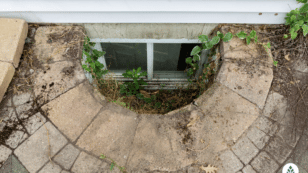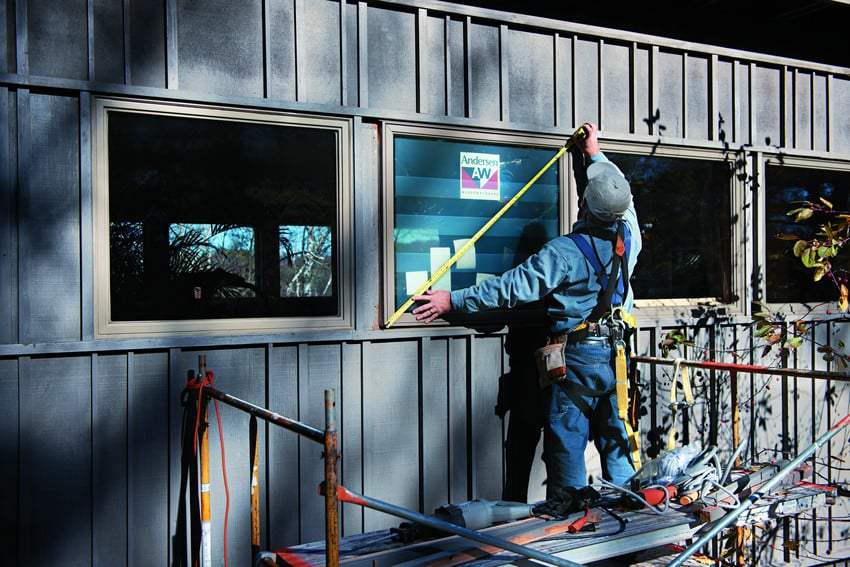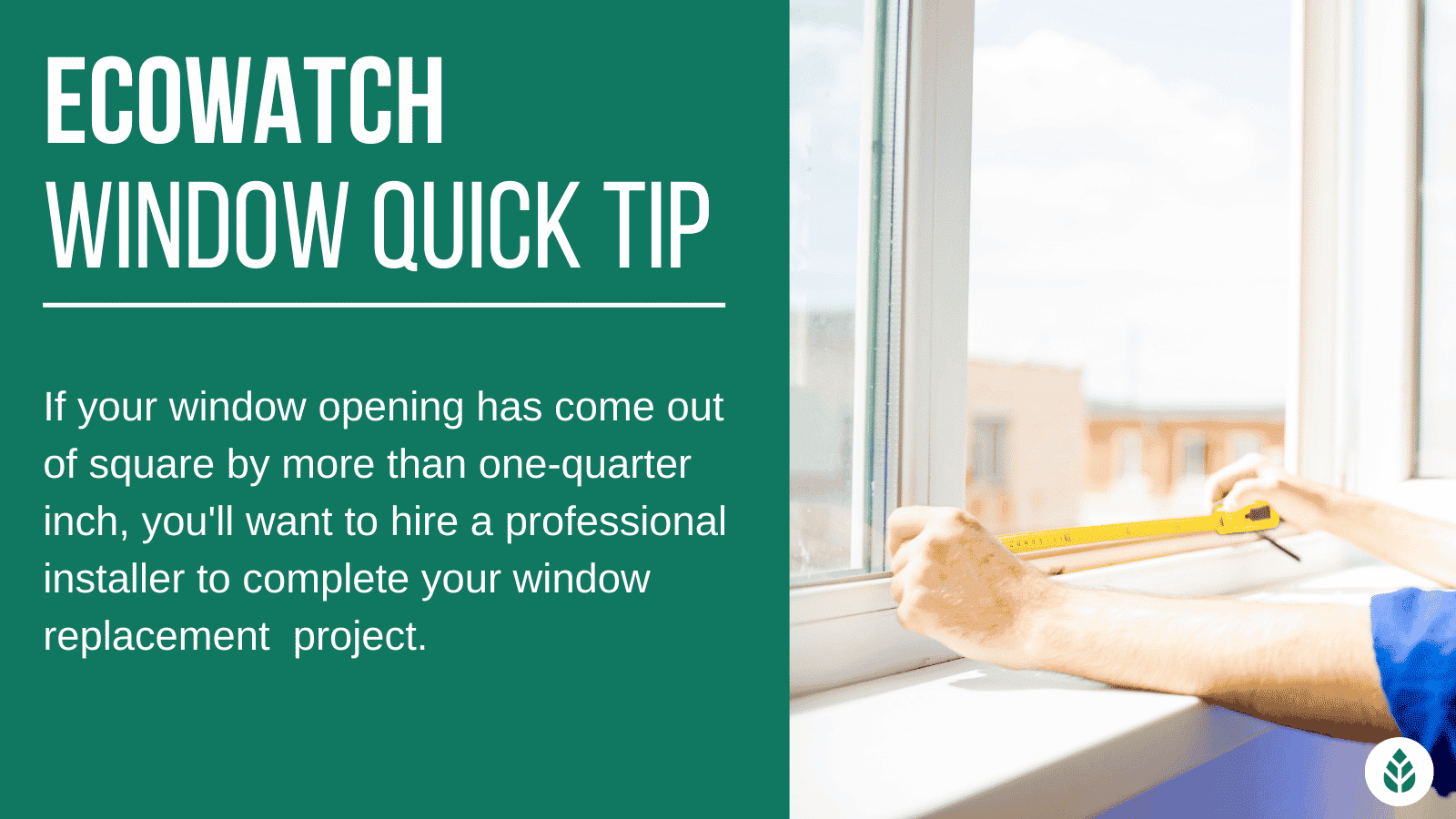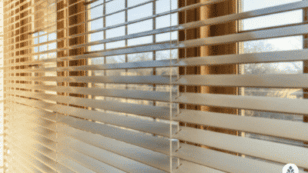

How to Measure for Replacement Windows: A Complete Homeowner’s Guide for 2024
In this guide on measuring for replacement windows, you’ll learn:
- How can you tell if a DIY window replacement is suitable for your home?
- How do you measure windows accurately for replacement?
- How do you order new windows that will fit your home?
- How to measure for replacement window screens?
This EcoWatch guide has helped many homeowners learn how to measure for replacement windows and has allowed them to successfully complete their own home window project. Let’s get started!
Each product and or company featured here has been independently selected by the writer. You can learn more about our review methodology here. If you make a purchase using the links included, we may earn commission.
If you need to measure your windows to get accurately-sized replacements, you’re in the right place.
Your windows work tirelessly to keep your home and your family protected — keeping out water and extreme temperatures year-round. Eventually, your windows will need to be replaced, and you’ll have to decide between hiring a professional and attempting a DIY window replacement.
If you choose to replace your windows yourself, it’s crucial that you measure them accurately so that your new windows will fit perfectly in the existing wall openings.
In this guide, we’ll discuss how to tell if your windows are suitable for a DIY replacement, how to measure your windows accurately, how to order new windows and more. We’ll walk you through the process step-by-step so that you’re fully prepared to tackle your window replacement project and save some money on labor costs.
How Do You Measure Windows for Replacement?
Completing a DIY window replacement can be a rewarding home improvement project, not to mention that it can save you hundreds or even thousands of dollars on labor and other window replacement costs depending on how many windows you replace. Knowing how to measure your windows accurately is essential; otherwise, you’ll end up with new windows that don’t fit in the existing window opening, and you’ll need professional window installation after all.
Below, we’ll walk you through the process of measuring your old windows to ensure your new ones fit without issue.

Renewal by Andersen

Save $375 Off Each Window
Average cost
Pros
- Great industry reputation
- Award-winning company
- Member of US Green Building Council
- Manufactures products in-house
Cons
- No lifetime warranty
- More expensive than competition

Window World

200 Locations Nationwide
Average cost
Pros
- EnergyStar Partner
- Large service area
- Wide variety of products and services
- Great industry reputation
- Lifetime warranty
Cons
- Quality of service will depend on your area

Window Nation

9 States (75 miles from showrooms)
Average cost
Pros
- Award-winning company
- Wide variety of products and services
- Manufactures products in-house
- Custom Designs
Cons
- Installation not covered by warranty
- Limited service area
Check to See That Your Window Openings Are Square
Before you measure for your new windows, you need to make sure the openings for the windows in your wall haven’t come out of square.
Provided a window is rectangular, it will have four right angles and two sets of sides each with equal lengths. When windows are installed in your home, they can be shifted by the framing in your wall that holds the window in place (the wall framing that contains the window opening). Natural house settling, water damage, and foundation issues can all cause your wall framing to shift, which in turn can warp your window frames and cause them to come out of square.
If your window opening has come out of square, installing a new replacement window can be dangerous. Depending on the extent of the shifting, your new window could get damaged, the seal around the window could break or it could fail to fit inside the wall framing, even if it’s the right size for the window opening. It’s imperative, then, to always check to ensure the wall framing is square before attempting a DIY window replacement.
To check that the wall framing is square, head inside and measure the diagonals. First, measure from the top-right-most point of the window trim to the bottom-left-most point of the window trim. Record the measurement, and then use the same process to measure the opposite diagonal. When the wall framing is in square, the two diagonals will be identical.
A slight variation — by up to one-quarter inch — means your wall framing is relatively square, and DIY replacement will be no issue. If the diagonals are off by more than one-quarter inch, you will need to defer to a professional to assess the issue and potentially to reframe the wall section and correct any structural instability.
Measure the Window’s Width
Once you’ve confirmed that the window openings in your wall framing are square, you can begin taking measurements for the replacement windows. Start by measuring the width, which will require three different measurements: along the bottom, middle and top of the window.
Using your tape measure, first measure the width along the bottom of the window. Open the bottom portion of the window and measure between the surface of the jambs. The jamb is the surface against which the side of your window sash slides when opening and closing. Record this measurement.
Next, repeat this process for the top of the window and the middle of the window. You might need to remove your sash/sashes if possible to get an accurate middle measurement. If you can’t remove the sash, just measure as close to the middle as you can.
Record the bottom, middle and top width measurements, and then identify the smallest measurement you come up with. This will be the width of your new window.
Measure the Window’s Height
Next, you’ll need to measure the height of the window. You’ll also do this three times, measuring from the head of the window — sometimes called the head jamb, which is the horizontal face against which the top of the sash closes — to the sill, which is the bottom horizontal surface against which the sash closes.
Again, measure at the left side of the window, in the middle and at the right side of the window. Mark the smallest measurement of the three; this will be the height of your replacement window.
Measure the Window’s Depth if Applicable
In some cases, you’ll also need to measure the window’s depth, although this is uncommon. Most windows in modern homes are a standard depth based on the dimensions of framing lumber. If you live in an old home, a modular home or a mobile home, however, you might need to take the depth measurement.
To determine your window’s depth, use your tape measure to measure from the trim on the inside or your window to the trim on the outside. Essentially, you’re taking the depth of the entire sill. You should only need one measurement for window depth. If it’s at least 3 1-4 inch, your window opening is suitable for a standard-depth window.
Adjust the Numbers
In some cases, you’ll run into issues or inconsistencies with measurements, especially if your frame is slightly shifted. To account for these potential problems, you’ll need to round down each of your marked measurements to the nearest one-eighth inch.
For example, if your smallest width measurement was 24 1-16 inches, round down to 24 inches even, which is the most common window width. If your lowest window height measurement was 36 1-8 inches, leave this measurement as is.
Ordering Your Windows
Finally, it’s time to order your new windows based on your window measurements. In some cases, you might be able to buy standard-sized replacement windows to install in your home. You can check for availability at your local home improvement store or online. Just keep in mind that standard sizes might not fit perfectly in your window frame, as there can be slight differences in every window opening.
For a more accurate fit, you should consider ordering windows from a manufacturer based on your measurements. The measurements you took from your existing windows will lead to the ideal fit and will often make the installation a lot easier. Provide the measurements to your manufacturer, wait for the windows to be delivered, and then proceed with the installation process.
Rather than providing these exact measurements, your manufacturer will take one-fourth inch off of your height and width measurements to ensure that your new window fits inside your window opening. You can then use shims, insulation and weatherstripping to seat and weatherproof the window for an airtight fit and maximum energy efficiency.
How to Measure for Window Screens
Many homeowners also need to measure for window screens to allow for ventilation without the threat of insects or debris coming in through the window. First, you can check to see if your new windows include screens. If they don’t, you’ll need to measure to ensure they fit properly.
Here’s an overview video of how to do so, or read on for our process guide:
Head outside with your tape measure and measure the horizontal distance between the side screen channels. These will often have small inlets on the inside where the screens can lock into place. Record your measurement.
Next, measure the vertical distance between the top and bottom screen channels. These are channels on the bottom and top of the outside of the window that hold the screen in place. Be sure to measure from the lowest and highest points inside of both for an accurate measurement.
You can use these measurements to order screens that will fit your window perfectly. Since window screens don’t require an airtight fit like windows do, there’s no need to round down your measurements or adjust them at all to get the right size.
FAQ: Measuring for Replacement Windows
Below, we’ll answer some of the most common questions we get asked about measuring for and installing replacement windows.
Measurements for replacement windows can be taken from either the inside or outside of your home.
Width measurements are taken between the window jambs, which are the vertical sides of the window along which the sashes slide. Height measurements are taken between the header and the windowsill, which are the horizontal surfaces against which the sashes close in a standard double-hung window or single-hung window.
The most common window size is 24 inches by 36 inches, width by height. While it might be tempting to purchase standard-sized windows before measuring your existing windows, it’s a much better idea to take measurements and buy custom windows that are guaranteed to fit in your home.
Windows that are off by even one-fourth inch sometimes won’t fit in your window frames, and ill-fitting windows are far more likely to fail and get damaged. You can save yourself money and frustration in the long run by ordering windows to fit your exact window openings.
If you’re measuring rough openings in your walls for new construction windows, the process is much easier than measuring inside an existing window. You’ll simply need to take three measurements each of the height and width of the wall opening. Record the shortest measurement of the three, and use those for your measurements.
When you’re ordering new construction windows, be sure to let your manufacturer know that you’re providing rough opening dimensions. If you’re instead buying standard replacement windows, take two inches off of each of the measurements and use those numbers to buy a window that will fit properly.
DIY window replacement is not recommended if your window opening is damaged in any way. This includes shifting from structural issues, warping, bowing, mold growth or water damage. All of these issues can indicate or lead to structural problems with your wall that could leave your new window inadequately supported. If you run into these problems, we strongly recommend having a professional do the window replacement for you.

 233k
233k  41k
41k  Subscribe
Subscribe 






